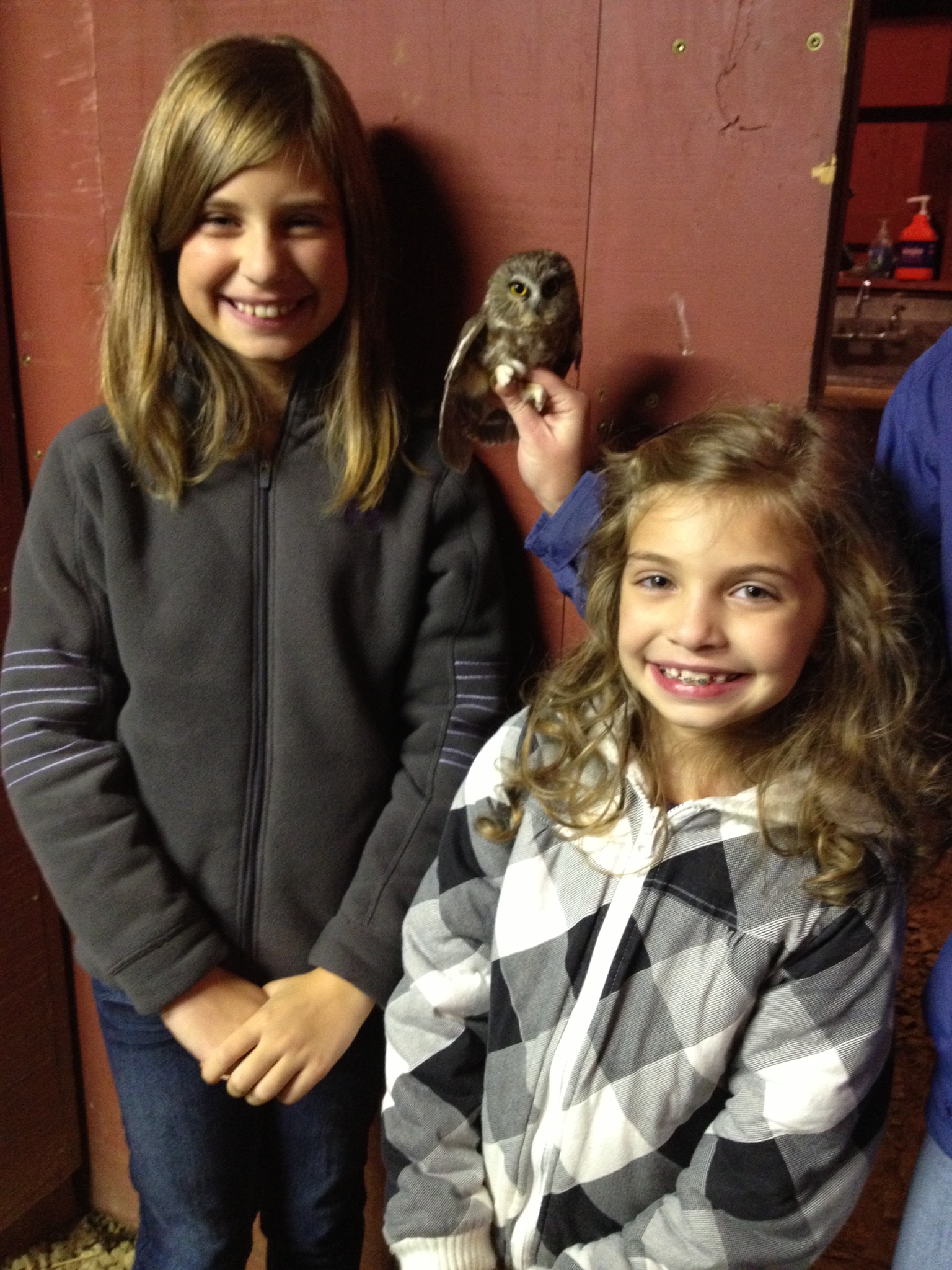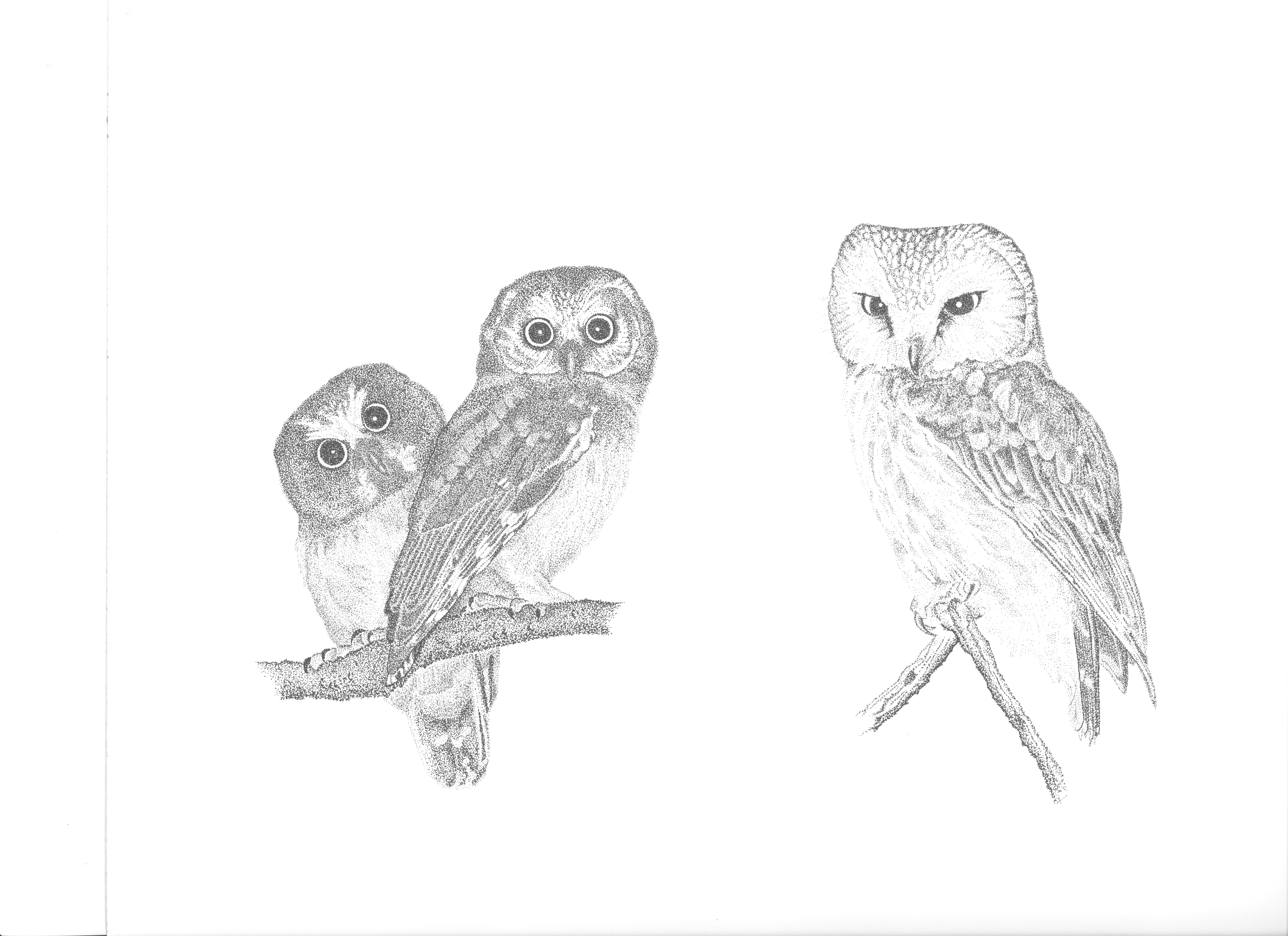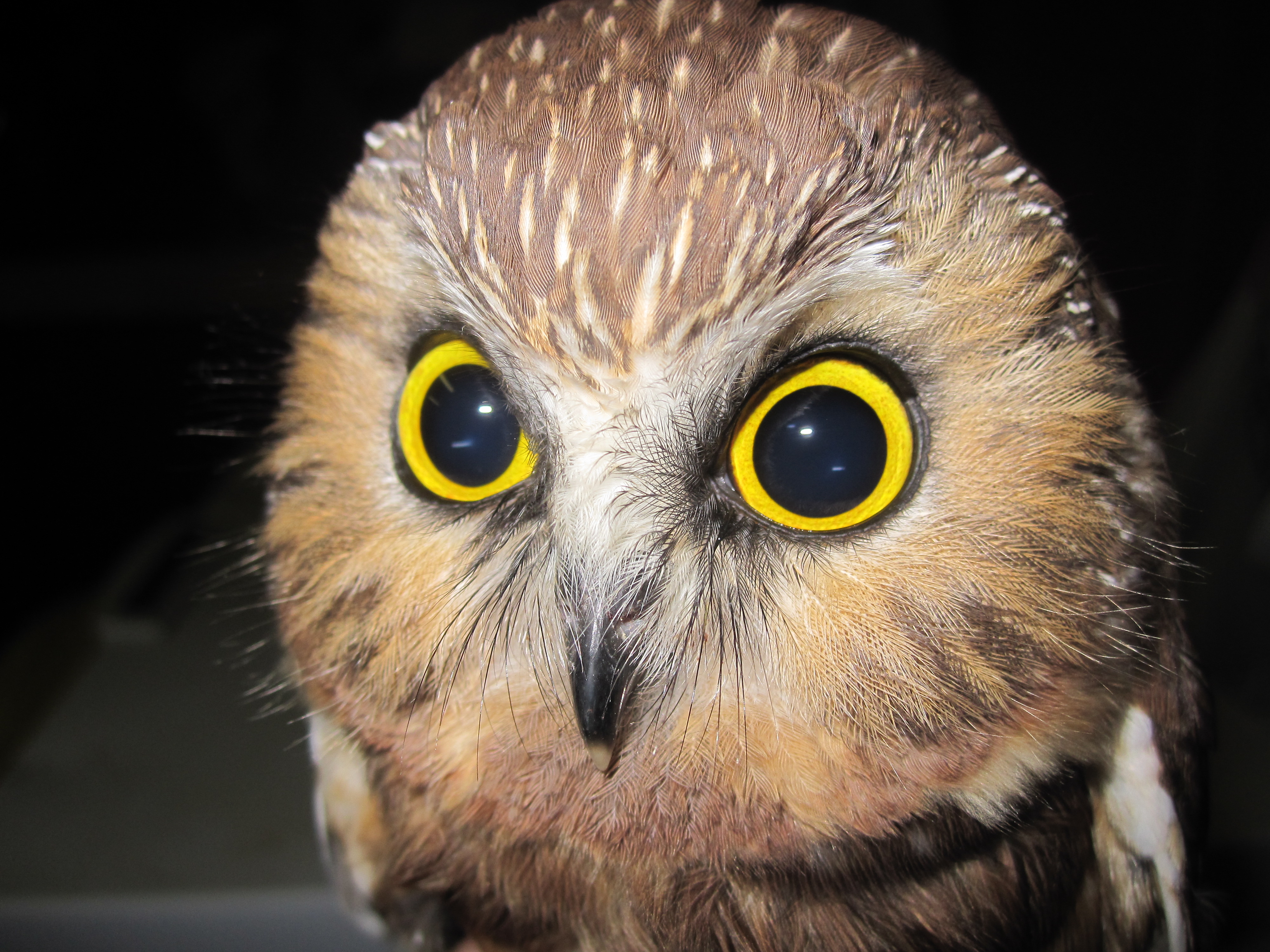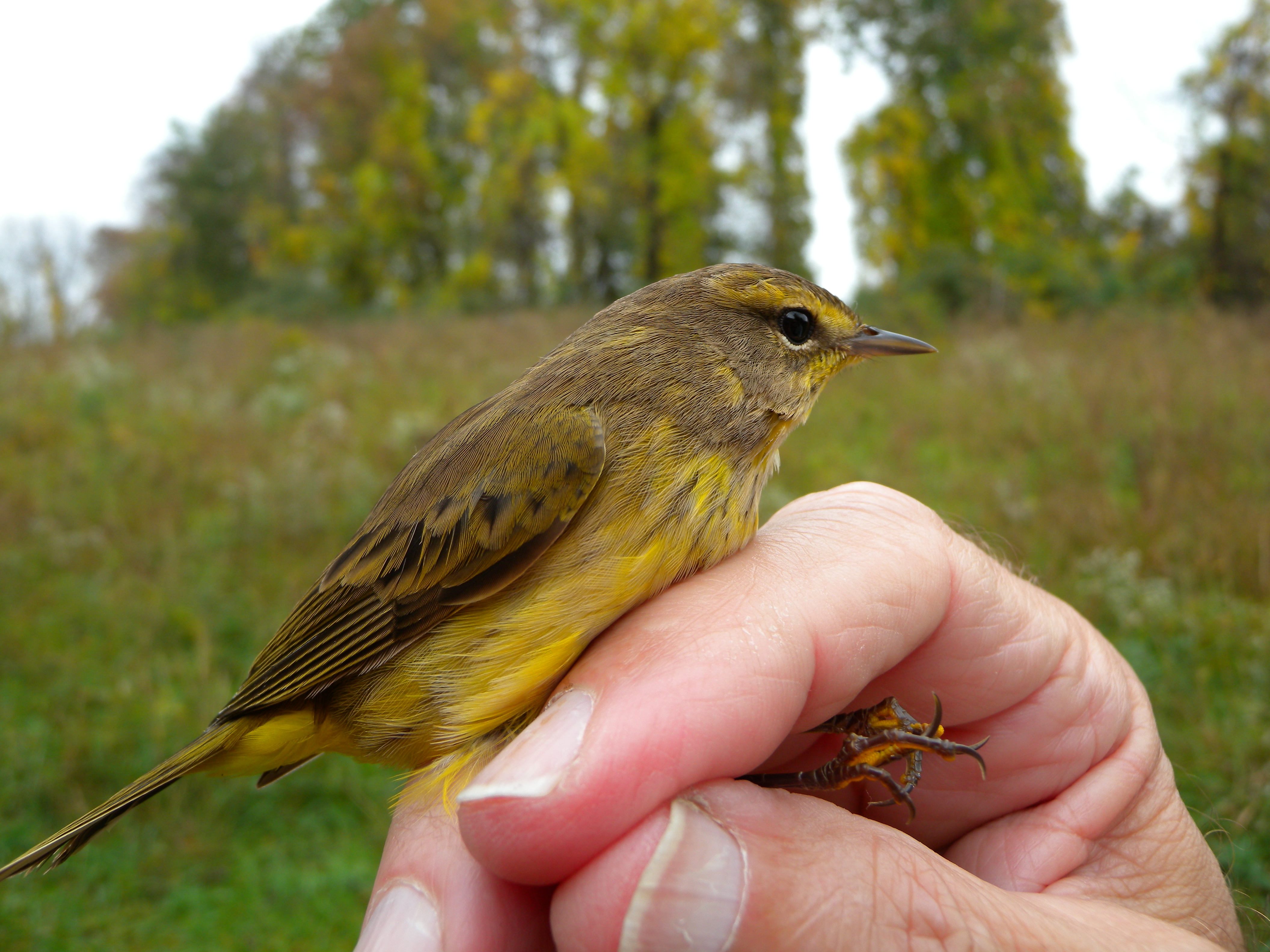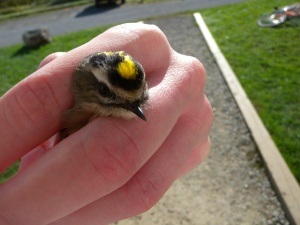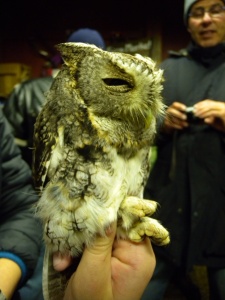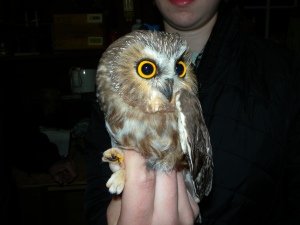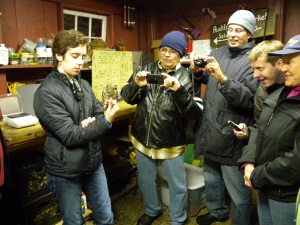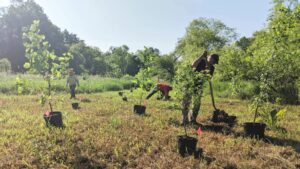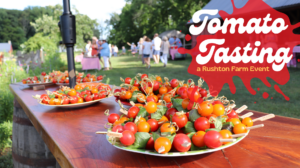
Well, I have lots to report from the field, so I’ll start with last week, which was an exciting one for Rushton banding station! On Monday (Columbus Day) we netted 73 songbirds of 17 species including lots of Ruby-crowned Kinglets, our first Hermit Thrush of the season, Swamp Sparrow, Magnolia Warblers, Black-throated Blue Warblers, Common Yellowthroats, our first Hairy Woodpecker of the season, and bushels of robins and White-throated Sparrows. All this was accomplished with 3 less nets than the usual 12, as we were slightly understaffed and strive to avoid getting more birds than we can safely process. Woodcock, Eastern Phoebe and Cedar Waxwings were also in the area, but not netted.

We got rained out last Tuesday (10/9), but on Wednesday (10/10) we managed to band safely through the fog, mist and spitting rain, opening and closing nets as needed because we were so well staffed. We netted 68 birds of 21 species, an exceptional day for Rushton. Our first migrant Sharp-shinned Hawk of the fall stopped by along with two House Finch, a species we rarely see.

The rest of that Wednesday’s catch was similar to Monday with the addition of a couple of beautiful Yellow Palm Warblers, a Gray-cheeked Thrush, and a rather late Black-and-white Warbler that we first banded over two weeks ago. She was a young female hatched this year who seemed confused about the whole migration thing; she had no fat stored aka no fuel for her imminent journey. In fact, she actually lost a gram in those two weeks! A recap like this gives us a glimpse into stopover ecology of these migrant songbirds. Perhaps it’s normal for a hatching year Black-and-white to stay put for two or more weeks before migrating or continuing migration? Or maybe she’s struggling. After all, more than half of baby birds do not make it through their first year of life…



Another 17 species last Thursday (10/11) included two Sharp-shinned Hawks (adult and juvenile females), our first Winter Wren, another Palm Warbler, our 26th Swainson’s Thrush and more Gray-cheeked Thrush. Magnolia Warbler, Common Yellowthroat, and Black-throated Blue Warbler, along with Yellow Palm and Myrtle warblers continued landing in the nets. Ruby-crowned Kinglets filled the trees and we caught our share.

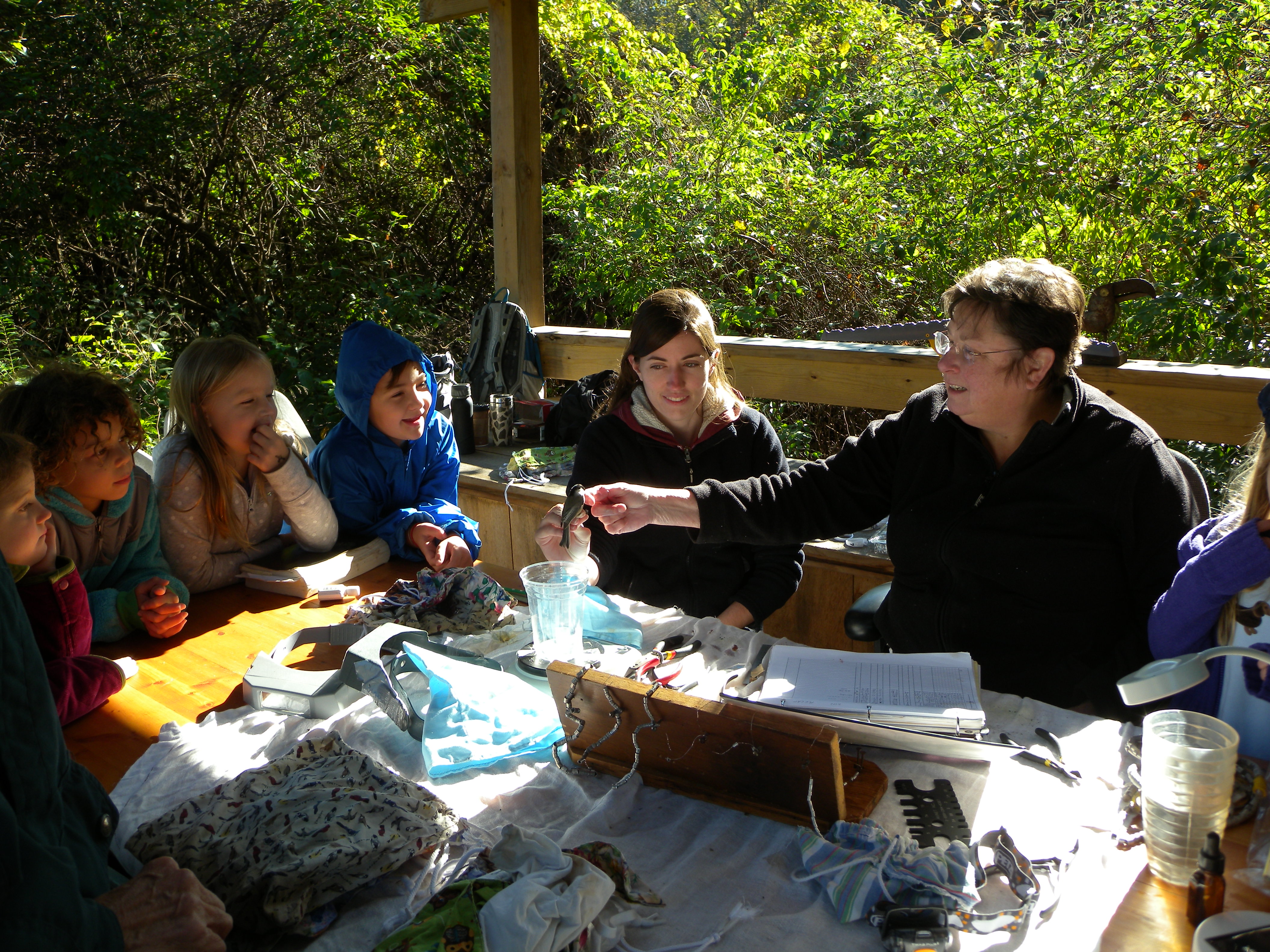
 Carolina Chickadee before release. Photo by Blake Goll.
Carolina Chickadee before release. Photo by Blake Goll.This brings our day banding total for last week to 178 birds. It’s sparrow time at Rushton but still no sign of Lincoln’s Sparrow or Fox Sparrow. Fall banding is nearing the end, but it’s not over until the “Fox Sparrow sings!”
Yesterday, we banded our first regal White-crowned Sparrow and the first stunning Golden-crowned Kinglet of the season. We also recaptured our little lady Black-and-white Warbler, so she’s been at Rushton for 3 weeks now! She seems slightly healthier this week and put on a gram as if maybe she is now thinking about getting ready to migrate.

PUBlic Songbird banding continues every Tuesday and Thursday mornings at Rushton….
…when it’s not raining for the next couple of weeks until all we’re getting is sparrows and juncos. This Thursday, we have a group of thirty 2nd graders from Abington Friends coming from 9:30-12:30pm, so you may not want to come then. Otherwise, no reservation is needed for songbird banding, unless you’re bringing a large group. Hours are 6:30am-11am.
The monitoring of Northern Saw-whet Owls (NSWO) is a nocturnal activity whereby this small owl species is caught using a system of loudspeakers (playing their calls) surrounded by mist nets in which the owls become entangled. The data collected from this process gives scientists information about the cyclical nature of the migratory cycles of these species and their reproductive success.
This year is a shaping up to be banner year so far with banders north and south of us reporting the earliest-on-record peak of Saw-whet migration. Normally, the peak occurs around Halloween, but many stations reported record numbers last week. This season, the tireless Rushton banding crew has already banded 41 new Saw-whets and recaptured 1 foreign Saw-whet in just 6 nights from 10/10-10/16 (plus 3 new Eastern Screech Owls). The floodgates (and our hands) really burst open last night with 17 feisty young owls in our nets and many more devils left in the woods (and 34 bloody holes in our hands from 17 pairs of needle-sharp talons!). This blows the Chester County one-night record we set last year out of the water, which was 12. Our current total of 42 NSWO in 6 nights is more than the total number caught in 2011 after 23 nights of effort (a mere 34 owls)! If we stay on fire like this we will far exceed our best year, which was 2010 (91 owls).


This morning we discovered that the foreign recapture we got last night, a hatching year female (born this year), was originally banded in Ellenville, NY on 10/08/2012. Our calculations show that this young owl flew about 125 miles in about a week’s time to arrive at the Rushton “late-night Wendy’s takeout” yesterday evening.
In addition to these voracious “woodland elves” last night, we caught (alongside an outraged owl) a very dead field mouse in the net that weighed 19.1g. After banding the owl, we offered his mouse in a “to-go bag”, but the owl refused to take his meal with him even though he seemed quite hungry. Perhaps he’s germa-phobic and didn’t like us getting our grubby paws on his “burger”. I don’t blame him.


The experts are saying this is not a cyclical “irruption year” due to the lack of mice and voles in the north but rather a bumper crop of Saw-whet babies spilling south due to a bumper crop of voles this summer in the north. Hence, we’ve only banded hatching year owls visiting the Rushton all-you-can-eat mouse buffet so far.
“Between migration banding in the morning for songbirds and at night for owls, we are burning the bander at both ends,” says Doris McGovern, Rushton’s federally licensed bird bander. “Oh well, it’s owl in a night’s work!” she says, still witty even though sleep deprived.
Please reserve an evening by e-mailing Lisa Kiziuk at lkr@wctrust.org as soon as possible and note that banding is weather dependent as rain or high winds will cause the station to close. See available dates below.
The station is located in the farm shed at Rushton Woods Preserve and Farm and the GPS address to use is 1050 Delchester Road, Malvern, PA 19355. Here’s a link to a map : http://wctrust.org/?page_id=58 (Rushton is on the corner of Goshen and Delchester Roads, with the entrance on Delchester). Please note that parking is at a premium and you may be asked to park in the field lot.
You will want to come when there is little or no moonlight and we can’t band if it will rain. Based on my moon chart the best times will be between October 17 and 20 and between November 8 and 19. There are a few spaces left for this Thursday October 18th. Otherwise, choose any Thurs, Fri, or Sat starting October 25 until Thanksgiving with the exception of the following dates:
CLOSED Days Not Open to Public Include:
November 9, 10,11, 15, and 17
Hope to see you at owl banding, but please remember to RSVP to Lisa first!
Thanks,
~Blake

